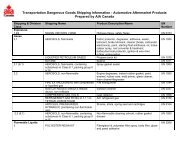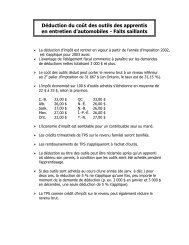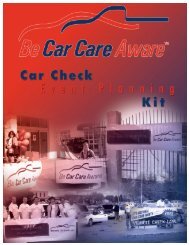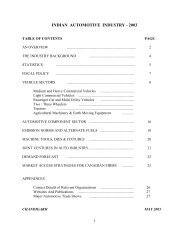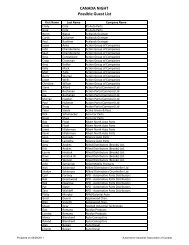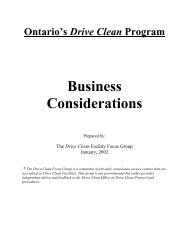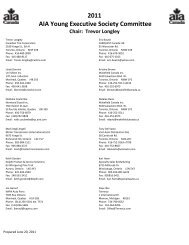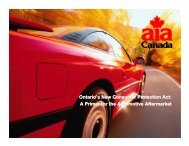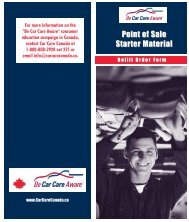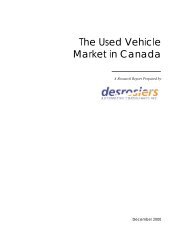Euro 5 Impact Assessment - Automotive Industries Association of ...
Euro 5 Impact Assessment - Automotive Industries Association of ...
Euro 5 Impact Assessment - Automotive Industries Association of ...
You also want an ePaper? Increase the reach of your titles
YUMPU automatically turns print PDFs into web optimized ePapers that Google loves.
will be made <strong>of</strong> open filters to reduce the mass <strong>of</strong> particulates. This would lead to asituation where high emission levels <strong>of</strong> ultra-fine particles continue to be created.The use <strong>of</strong> a particle number standard is a means to ensure that emissions <strong>of</strong> ultra fineparticles are controlled and that developments in filter technology continue to focus on theremoval <strong>of</strong> ultra fine particles. Present test procedures set down in <strong>Euro</strong>pean legislationdo not include a method for measuring particle number. Therefore a new procedure wouldbe required to be adopted if such an emission standard were to be introduced. Work ondeveloping and testing a new measurement protocol for both particulate mass and numberhas been taking place at the United Nations Economic Commission for <strong>Euro</strong>pe (UN-ECE)under the World Forum for Harmonisation <strong>of</strong> Vehicle Regulations (WP 29) in Geneva.Once this work is complete, the new standard shall be implemented into <strong>Euro</strong>peanlegislation.Introducing a new test procedure introduces costs to industry and testing facilities inadapting their practices. However as a number <strong>of</strong> laboratories are involved in the workpiloting the procedures, some <strong>of</strong> the costs have already been incurred. Furthermore,introduction <strong>of</strong> the new procedure would be for a wider set <strong>of</strong> factors rather than simplythe purposes <strong>of</strong> particulate number counting. The key reason for the development <strong>of</strong> thetest procedure was to find a method <strong>of</strong> measuring particulate mass that was more reliablein providing repeatable results at low emission limits. Therefore there are good reasons forintroduction <strong>of</strong> most <strong>of</strong> the measurement methodology to improve the accuracy <strong>of</strong>particulate mass measurement, irrespective <strong>of</strong> whether the number measurementcomponent is used.Consequently, measuring the number <strong>of</strong> particulates instead <strong>of</strong> their mass could beconsidered as a more effective means <strong>of</strong> regulation in the future.6.4.3. Durability requirementsFor the time being, existing regulations require manufacturers to confirm the durability <strong>of</strong>pollution control devices in light duty vehicles for 80,000 km. The proposal includes theextension <strong>of</strong> this durability period from 80,000 km to 160,000 km. The period wouldmore realistically reflect the actual life <strong>of</strong> vehicles and ensure that emission controlsystems continue to function throughout the life <strong>of</strong> the vehicle.Given the average life <strong>of</strong> vehicles across the EU is in the order <strong>of</strong> 13 years 20 and theaverage distance travelled is at least 13,000 km per year, cars sold in <strong>Euro</strong>pe will cover adistance <strong>of</strong> around 170,000 km in their lifetime. The current durability requirementextends to only half <strong>of</strong> the distance travelled in the life <strong>of</strong> a vehicle, therefore this figurehas been reviewed.Extending the durability requirements would therefore be in line with the principle <strong>of</strong>ensuring that a vehicle continues to produce low emissions for its entire lifetime. Similarprinciples apply in other parts <strong>of</strong> the world. In the United States, emission standards arenow set for 192,000 km (120,000 miles). California has gone further and now providesincentives to manufacturers for certifying the emissions performance <strong>of</strong> their vehicles to240,000 km (150,000 miles).20 FEBELAUTO Rapport Annuel, 200426



